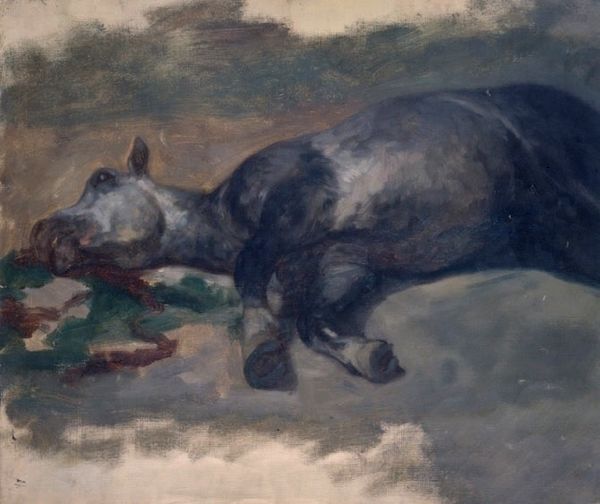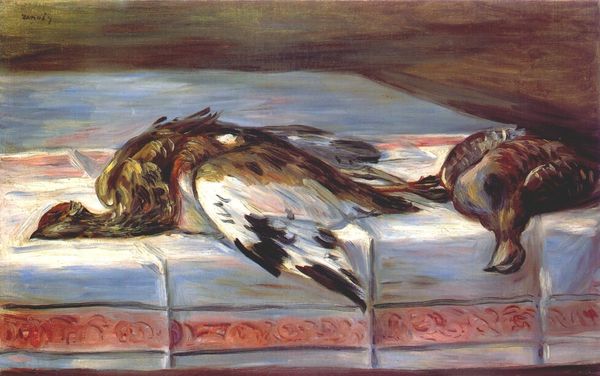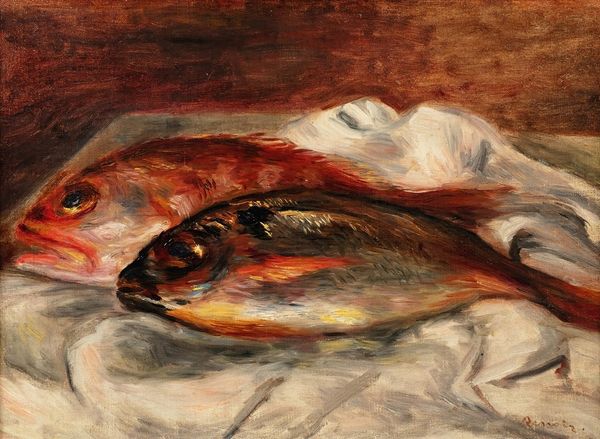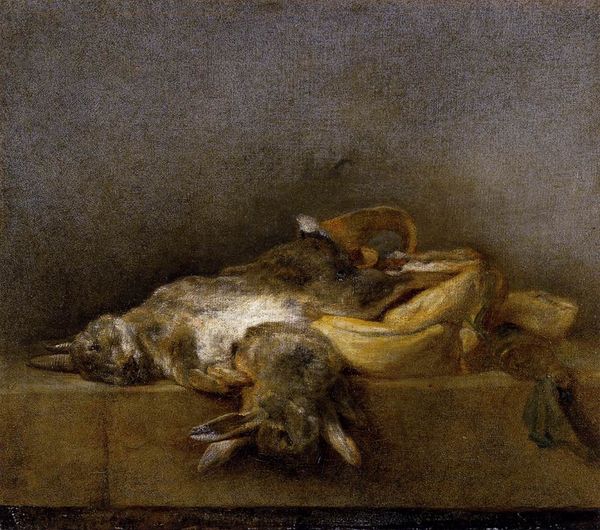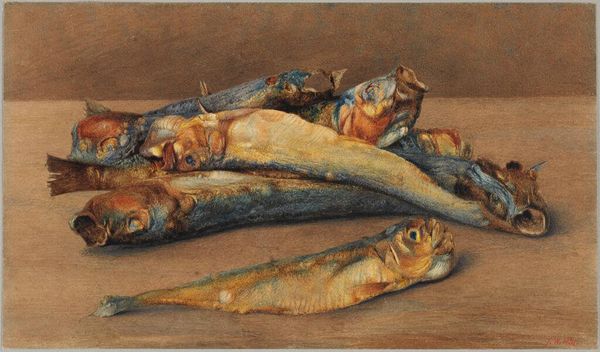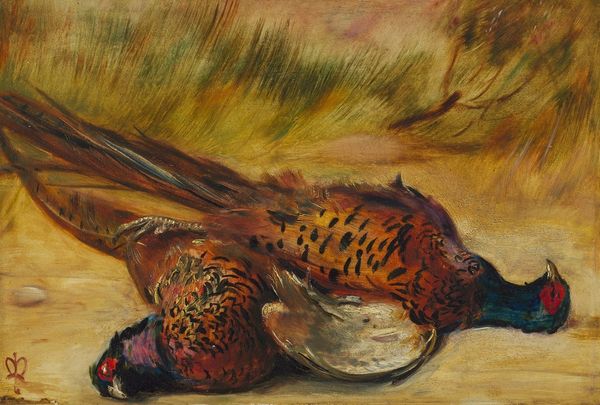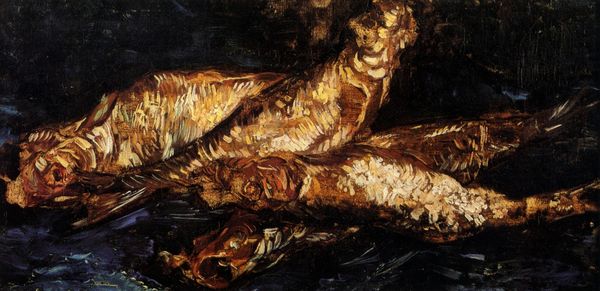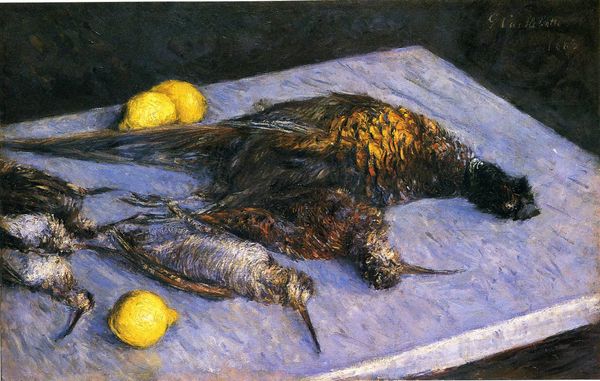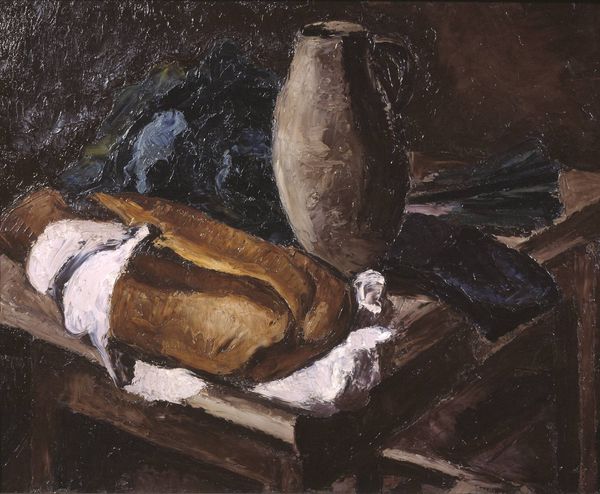
painting, oil-paint
#
painting
#
impressionism
#
oil-paint
#
bird
#
oil painting
#
animal portrait
#
genre-painting
Copyright: Public domain
Editor: We're looking at Claude Monet's "Pheasants and Plovers" from 1879, rendered with oil paint. It’s... stark. The birds are beautifully painted, but undeniably dead, laid out on what seems to be a table. How should we approach interpreting this work? Curator: Consider the socio-political context. In 1879, France was still recovering from the Franco-Prussian War and the Paris Commune. How might the depiction of dead game birds relate to notions of sustenance, vulnerability, or even societal collapse and recovery? Was Monet subtly commenting on the availability and control of food resources? Editor: That's a fascinating perspective. I initially saw it as a purely formal study of light and texture, characteristic of Impressionism. Were still lifes like these popular during that time? Curator: They were, often commissioned by the burgeoning bourgeoisie to signal their refined tastes and access to luxury goods. But think about how Monet manipulates the tradition. Instead of lavish displays, he gives us a raw, almost brutal depiction. Is he critiquing the traditional genre, perhaps revealing a darker side of consumerism and privilege? Editor: So, it's not just about pretty brushstrokes, but a commentary on social and economic conditions through a traditional subject matter. I never would have considered the broader historical context. Curator: Precisely. Examining art through the lens of history helps us understand how it engages with the issues of its time and continues to resonate today. Editor: This has completely shifted my view. Thank you, this makes the painting so much more powerful and unsettling. Curator: Indeed, now we can see the artwork transcends a still life.
Comments
No comments
Be the first to comment and join the conversation on the ultimate creative platform.

